Trusted Raw Feeders since 2000 for a reason

One of the most common questions we are asked here at Big Dog, is “Is Raw Food Safe For My Pet?”. This is the number one concern of pet parents and some veterinary professionals alike, so we thought we’d take some time to interview our Quality Assurance Manager, Greg, on some of the details of his job here at Big Dog.
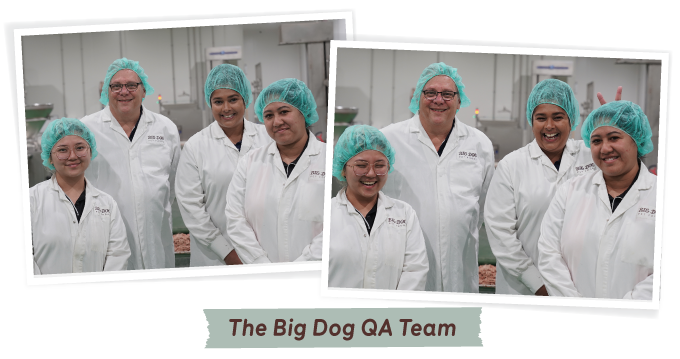
Q: Greg, if you had to summarise your job in one sentence, how would you?
A: It’s my job as Quality Assurance Manager at Big Dog Australia to implement and maintain our food safety policies and procedures. This is to ensure that our product quality is the best it can be, consistently, to meet our high standards and reassure our customers’ that we have their pets’ best interests in mind. My role covers compliance for both domestic and export markets.
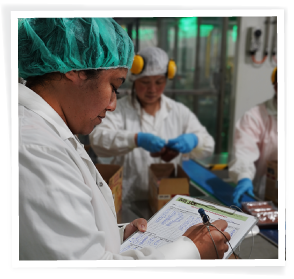
Q: And what makes you qualified to perform this important role?
A: My background is in food production and I have over 30 years’ experience in facilities that produce food for human consumption, most of that in the meat industry. I completed studies in Food Technology through the University of Queensland and I approach my role here at Big Dog in the same way I did, working within the human-consumption meat processing industry.

Q: Please elaborate on your role here at Big Dog?
A: From a food quality and safety perspective, I look after all of our food safety procedures. This includes:
• Developing and implementing our Food Safety Manual covering our company policies, HACCP program, GMP (Good Manufacturing Practices), and management of our approved suppliers.
• Facility cleaning.
• Ensuring our food adheres to Australian and international safety standards.
• Being the main point of contact for 3rd party audits of our facility to maintain our various safety accreditations.
• Ensuring everyone in our team adheres to our procedures to achieve product consistency from batch to batch.
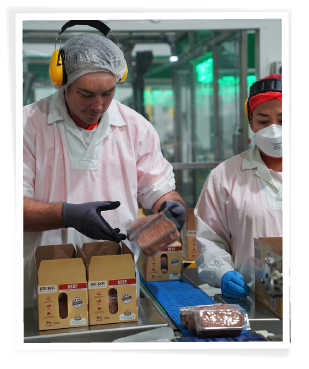
Q: Ok, you’re throwing big words at us already. What is a HACCP Program?
A: HACCP stands for Hazard Analysis and Critical Control Point. It was a system developed by NASA for risk assessment identification before problems arise and implementing steps to prevent risk. Having a robust risk assessment process within our business helps everyone from our team making our food to the pet parents handling it and, of course, the pets eating it.
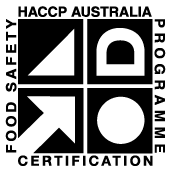
Q: What’s involved in cleaning a pet food production facility?
A: Given we handle raw meat products, our cleaning processes are very important. Our facility and machinery is thoroughly cleaned and sanitised every night after the day’s food production. We undertake protein and environmental swabbing of our facility and machinery to ensure there is no protein residues and / or pathogens on our food contact surfaces and our cleaning processes are effective. We partner solely with cleaning companies who specialise in cleaning food manufacturing plants.
Q: What is involved in adhering to Australian and International standards?
A: It really depends on each country as to the pet food standards we need to comply to. Some countries standards are far tougher than others and we find it’s easier to aim for the toughest standards then our food will comply in all other markets.
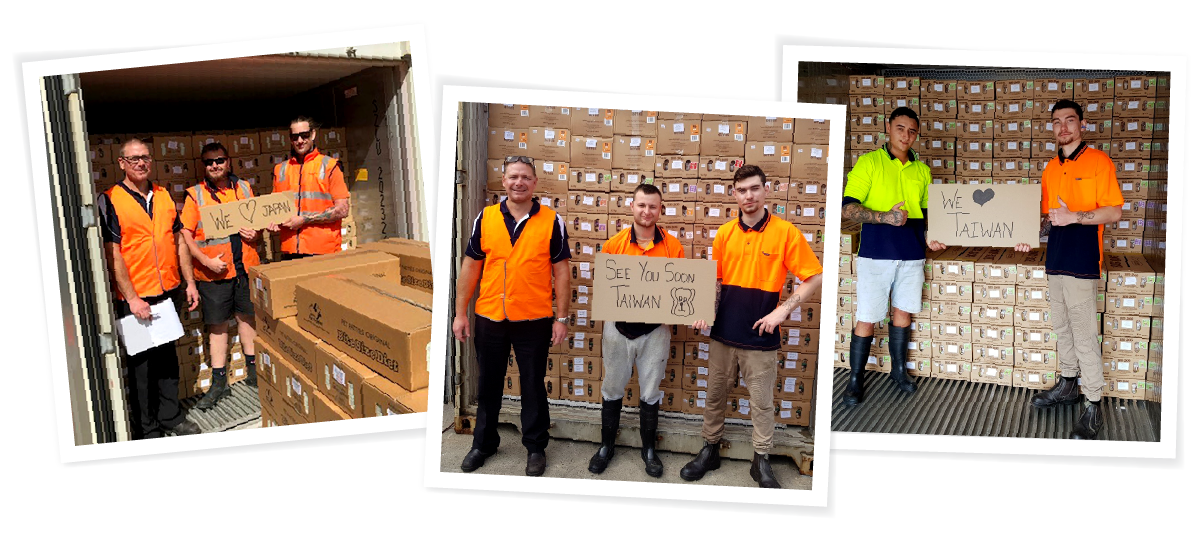
Q: You mentioned 3rd party audits, what does this mean?
A: Speaking specifically about the Australian pet food industry here, anyone can start manufacturing and selling pet food. There is an Australian Standard that should be followed (known as AS5812), but it is voluntary to do so at this point in time. This means that it’s up to the manufacturer to choose if they follow it. We are a member of the Pet Food Industry Association of Australia (PFIAA) and as part of our membership, we are audited by the PFIAA to ensure we comply with the standards. In addition to this, because we manufacture pet food for sale in the retail space, our customers also require their auditors to thoroughly review our processes and manufacturing for compliance. Finally, we are audited by Safe Foods QLD yearly for compliance against their standards as well as our HAACP audits for our certification here. This ends up being 4-5 audits every year so very frequently. Not that we need these as we’re committed to complying on our own, but it is nice to have regular 3rd party and unbiased approval that we’re doing everything right.
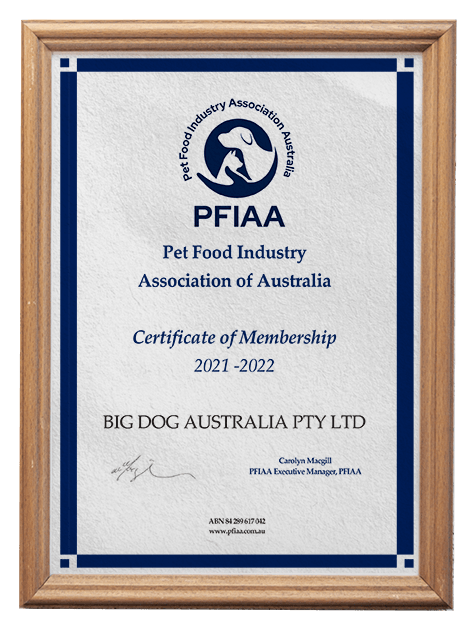
Q: You mentioned Safe Foods QLD, who are these guys?
A: We wouldn’t be able to manufacture pet food, using animal-based ingredients in Queensland without registering our business with Safe Food QLD. As part of our registration with Safe Food QLD (safefood.qld.gov.au), we are audited yearly by one of their representatives to make sure we are upholding our facility to the standards they expect for meat processing. These standards are the same as any factory processing meat for human consumption and while our recipes are not designed to be consumed by humans, they are manufactured to the same safety standards.
Q: And so tell us about product consistency and how you maintain this?
A: We manufacture our food using fresh, natural produce which we are very proud of. With this, comes a natural and acceptable level of product variation. Different cuts of meat result in changes to our product primarily from a colour and texture perspective. We do get questions from time to time when we have batch-to-batch variation so we do our best to maintain our product consistency as best as possible, allowing for the natural variation that comes with a 100% natural product.
Things that have no tolerance for variation are the nutritional basis for our recipes. This means the meat content is consistent, the offal content is consistent and so on and so forth. This way we know our products are always nutritionally sound and the best they can be for our pets.
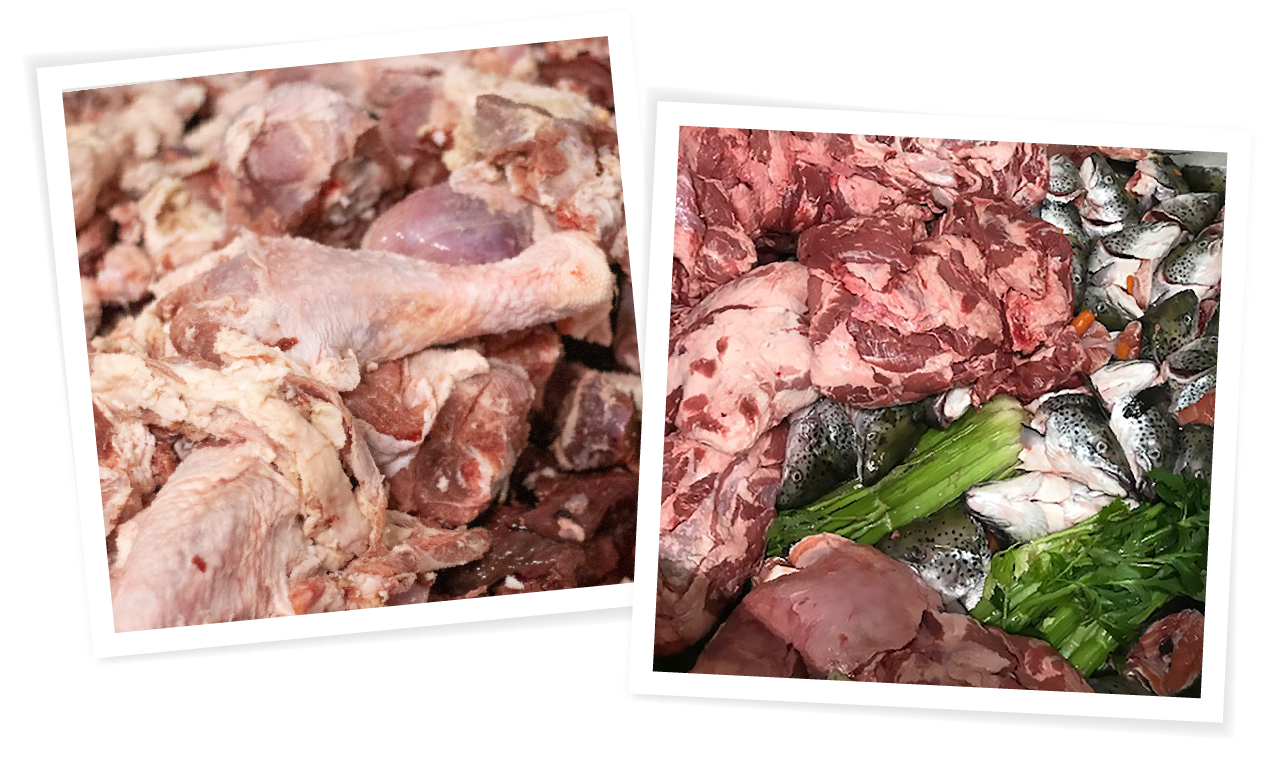
In addition to our raw material checks, we check our product throughout the stages of manufacturing for colour, consistency and smell. All of these checks must be signed off by a member of the Quality Team. For every product we produce over the day, we freeze a sample of each product overnight and then thaw for assessment in our quality lab. Only batches that get the tick of approval continue freezing down for distribution.
Q: You mentioned testing of the facility for pathogens, is this the only testing you do?
A: No, Micro testing is conducted on raw materials and finished product at a NATA certified laboratory to analyse and monitor the microbes that are present to ensure consistent quality and safety. In addition to our micro testing program, we send our food off for nutritional testing. Nutritional testing tells us the levels of macronutrients in our food (protein, fat and carbohydrates) and well as the micronutrients (vitamins and minerals) so we are confident in the nutritional completeness of our food.
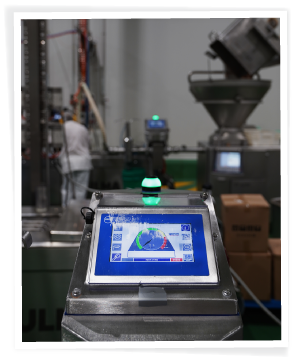
Q: What other cool tests or gadgets do you get to work with, Greg?
A: All of our processing lines have metal detectors attached to them as part of our safety screening measures. These metal detectors operate to a sensitivity of 3-4mm which vastly decreases the risk of contamination.
Q: What are you most proud of, in your role?
A: I am most proud of how our business supports the treatment of our ingredients and processes as if our food was to be eaten by a human. Of course our food isn’t fit for human consumption being raw and containing offal and crushed bone, but the way in which we handle our raw materials and prepare our food is as if it was.

Q: What would you say to anyone concerned about bacteria in their Big Dog food?
A: Raw food contains bacteria and canine and feline digestive systems are designed to handle this. However, it’s still important for us to make sure the bacterial levels of our food are within a safe threshold for pets.
Temperature checks are an incredibly important part of our quality processes. Given our product is raw, we need to monitor the temperature of our food throughout our process, to keep bacterial levels at a safe threshold that pets can handle.
We temperature check all of our raw materials. Anything that is too high, gets rejected and sent back to the supplier. We manufacture our food in a refrigerated production facility and check the temperature of our finished product before it gets frozen down to be shipped to pet stores.
We freeze our food down in blast freezers at -40oC for 23 hours before moving it to our purpose-built industrial freezers at -18oC for a minimum of 3 days. This process allows us to produce a raw product that is 100% natural and doesn’t need any preservatives
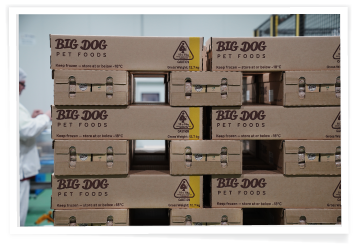
Q: You’ve spoken of quite a few different types of check points in your process, how many are there in total for every batch of food produced?
A: In addition to the safety, testing and cleaning procedures I’ve mentioned, every batch of food we produce undergoes multiple quality checks before it’s released from our facility to be transported to our retail customers. So each time someone serves their pet a Big Dog meal, they can rest assured it’s been thoroughly checked for quality.
These checks include: Raw material quality checks, ingredient batching checks, mincing checks, weight checks, product and packaging integrity checks and final product evaluation checks to name a few. Our suppliers also manage a number of raw material checks on ingredients before they are even sent to us as an important part of their processes in providing human-grade produce.
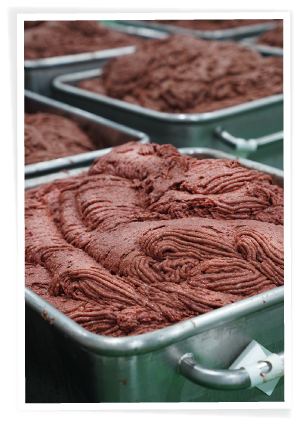
Q: What are some of the things you wish pet parents knew about our food?
A: There’s 2 things actually. The first being correct storage and handling is vital to ensure our food is at its best for your pet. Temperature abuse is a common thing we see here in the Quality Department that compromises our food. If our food hasn’t been stored and handled correctly between leaving our facility, and reaching your pets bowl, then I would not feed the product.
Q: And the 2nd thing?
A: For anyone that is ever unsure about the quality of their Big Dog product, email us at customercare@bigdogpetfoods.com with a photo of the batch details, date of purchase, storage and handling information and our quality team will do a thorough investigation of our batch records for you.
Q: So how would someone know what to look out for, when it comes to temperature abuse?
A: It’s really obvious which is good. Our sealed portion of food will be blown like a balloon from the gas produced by the deteriorating product and there will be a distinct colour change of the patty. You’ll also be able to notice the smell of the product isn’t fresh like it normally is.
Q: If you had to pick the one thing you do that is most important, what would it be?
A: That’s a hard one to answer but I honestly think it would have to be the ingredients we choose to use and the suppliers we choose to partner with. The quality of our raw materials is paramount and all of the other checks and balances within the quality department simply wouldn’t matter if we didn’t start with the highest quality ingredients. We’ve been working with some of our suppliers for over20 years and the relationship we’ve developed and trust we have built with them over the years is really impressive and it certainly makes my job a lot easier than it otherwise might be.

Have a question about our products? Get in touch with our Customer Care team customercare@bigdogpetfoods.com
